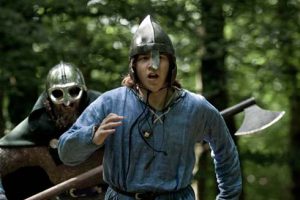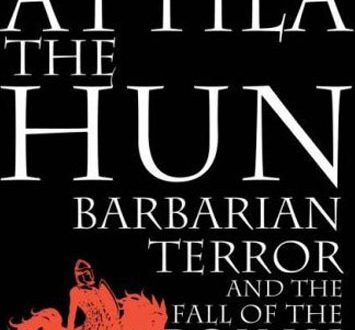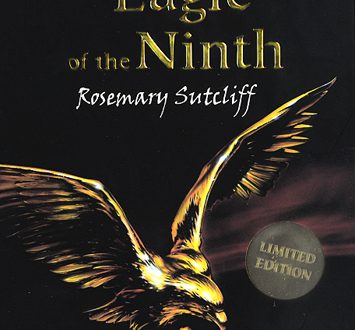It’s tempting to toss this two-part Channel 4 dramatisation of the events of the most famous year in English history straight on the tall pile of low-rent British historical docu-dramas, full as it is of Z-list actors, tomato-ketchup-for-fake-blood, and epic battle scenes featuring up to 30 people. Indeed, after sitting through two-and-a-half hours of Ian Holm’s hammy, sub-Lord of the Rings voiceover – which reaches for added Shakespearean effect by the cunning ruse of beginning every other sentence “oh” or “and so” – it’s tempting to frisbee the thing straight in the bin.
But there are actually quite a few interesting elements at work within 1066: The Battle for Middle Earth, which is directed by a well-respected figure in Justin Hardy, whose 2007 feature-length drama Relief of Belsen was shortlisted for a BAFTA award.
For a start it takes the relatively novel approach of attempting to tell the story of the demise of the Anglo-Saxons and the rise of the Normans – so popularly remembered as a clash of monarchs, William the Conqueror versus Harold Godwinson – from the perspective of the common man in the ranks. Plenty of artistic licence is obviously required to achieve this, but writer Peter Harness does well to wherever possible link events to the recorded facts, as derived from the major documents of the period – the Norse Sagas, the Domesday Book, the Carmen de Hastingae and the Bayeux Tapestry.
Enveloping the whole thing in the sweeping style of the Lord of the Rings movies might seem like a cynical cash-in, but in fact it highlights an interesting and under-appreciated connection between the Anglo-Saxons and JRR Tolkien’s famous fantasy tale. Tolkien was a professor of the Anglo-Saxon language at Oxford, and used it as the inspiration for many of the elements of his adventures in Middle Earth – right down to the concept of Middle Earth itself, which was how the Anglo-Saxons described the “land of men,” between heaven and hell.
While Hardy might not have had the budget at his disposal to create fight scenes even a fraction as dramatic and memorable as those in Peter Jackson’s multi-million dollar Lord of the Rings big-screen adaptations, he succeeds at least in delivering the viewer to the gore and chaos of the medieval battlefield in a fashion that’s very watchable, and pays at times fastidious attention to detail.
The Fellowship of Ordinary Men

While it’s the Battle of Hastings that was the decisive and best known confrontation of 1066, the English in fact fought three crunch encounters that late summer and early autumn. The first two – at Fulford and then Stamford Bridge (the village in Yorkshire, not the London football stadium), both fought against the Viking army of King Harald III – form the basis of part one of 1066: The Battle for Middle Earth. First, though, we’re introduced to our core protagonists.
The “fellowship of ordinary men” in question hails from the Sussex village of Crowhurst. Crowhurst – which was recorded in the Domesday Book as having been “laid to waste” in 1066 – was elected by Hardy as a microcosm of the experience of the Anglo-Saxon common folk in 1066 on the premise that it was small, involved in the events of the year and had a population about whom – thanks to a range of 11th-century source material – some educated guesses could easily be made.
Tofi (Mike Bailey) is a 14-year-old newlywed, while his friend Leofric (Tim Plester) is a cowardly farmer and resident clown. Ordgar (Francis Magee) is the local huscarl (a professional soldier in the service of the king), charged with recruiting all the able-bodied men in the area to the English army. He’s a supposedly fearsome warrior, although he’s never quite convincing as such, even when roaring and lopping-off enemy limbs. One commenter on a Guardian blog about 1066 aptly refers to him as having the demeanor of a “bad tempered pub landlord.”
The Viking army of Harald III – your stereotypical gang of hairy Nordic brutes who look like they’re in search of a heavy metal festival – we meanwhile meet setting off from Norway. They land at Cleveland and quickly set to butchering the forces of the Northern Earls of England at Fulford, in a clash that leaves the ditch at the battlefield’s centre “so filled with English dead that the Vikings could go dry-foot over it.” But they’re themselves routed by Harold’s army at Stamford Bridge a few days later, after they over-confidently divide their forces.
In part two, the “fellowship” – joined by a surviving Norseman, Snorri (Søren Byder), who has signed-up to the English army as a mercenary – rush back southwards as they hear tell that a new enemy has landed at Hastings. They’re Normans – an army of bloodthirsty, shaven-headed Gallic nasties, referred to as “Orcs” by the Anglo-Saxons, and led by King William, who believes himself rightful heir to the English throne. And they mean business. Various southern villages, including Crowhurst, are sacked and its inhabitants butchered (not Tofi’s wife though, nor a young lad whom we later discover to be the story’s narrator) in a bid to provoke the English into a prompt and open scrap.
As Harold’s army reaches the south coast, it finally faces-off against the much larger Norman force from the top of Senlac Hill at Hastings. All the essentials of a good pre-gunpowder-era screen fight are ticked off – vollies of arrows thwacking into shields and flesh, cavalry charges at massed ranks of infantrymen; various bloody shots of dirty, screaming, frenzied men flailing swords, axes, spears and bad language. The English hold firm for several hours, but finally the superior strength and combined arms of the Normans of course prevails.
“The bastard Norman,” the narrator laments, “left 5,000 unburied on Semlac Hill for ten long years.” And so began the Norman ownership of Britain, which – to this day we’re told – still persist in at least one fifth of the land.
Off With Their Heads

The kings in 1066 are relatively faceless individuals. Only Harold Godwinson gets foregrounded in any meaningful way, and then on as he’s slain at Hastings – either by an arrow to the eye or after being cut down by a horseman (as the commentary points out, the Bayeux Tapestry isn’t entirely clear on this) – then beheaded, disemboweled and gelded. It’s the foot soldiers’ experience that we’re treated to, in what Hardy intended to be an antidote to the David Starkey-fuelled belief that the telling of Britain’s story is in the history of its monarchy.
Even if the characters – the rustic, wimpy Anglo-Saxons and the weather-beaten, rock-hard Vikings – are flimsy, unimaginative and even at times implausible, their stories give a decent flavour of the hardship and terror of the age, as England was re-shaped inexorably under pressure from north and south.
The Lord of the Rings connection is definitely over-egged – constantly Hobbiting-up proceedings by referring to the English Channel as the “whale road” and the people of Crowhurst as denizens of “the shire”, for instance, is very clumsy. But, however much they might be shoe-horned into the story, it’s interesting to learn that so many elements of the Lord of the Rings – orcs, elves, beardy guys with long hair and silly names – and with it much of the fantasy genre at large, all originated from Anglo-Saxon sources.
Finally, for striving to remain historically accurate, 1066 deserves plenty of credit – references to original sources are frequent, while there are some nice touches in the battlefield scenes (destrier horses for instance – a common breed of war horse in the medieval era – are correctly ridden by the Norman cavalry at Hastings, after they transport them over at great expense). Where it falls short as a drama, 1066 is nevertheless thought-provoking, and could teach one or two bigger-budget blockbusters a lesson in how to weave a decent narrative without completely tearing up the history books.




